Chapter 4, Part 16
Once South and Southeast Asia were lands where Hindu and Buddhist kingdoms and empires, and later Islamic sultanates, conquered one another not only to exert their dominance, but also to control the lucrative spice trade in the region. Then the Europeans came and forever changed the geopolitical landscape of Asia and beyond. By the 19th century, two European nations – the British and the Dutch – through their quasi-governmental East India Companies had established monopolies on the world spice trade, from nutmeg to cinnamon, clove and pepper.
While the Dutch East India Company (VOC) was largely unchallenged in the Dutch East Indies (the precursor to modern-day Indonesia), the British East India Company (EIC) controlled much of the Indian subcontinent and Ceylon (present-day Sri Lanka). In India, the EIC gradually rose to prominence within centuries since their inception at the turn of the 17th century. In the mid-18th century, they won a decisive battle in Bengal against the Nawab (the local ruler who was under the influence of the once mighty Mughal Empire) and the French whose own East India Company was aspiring to be a major power in the region.
In the decades that followed, the EIC’s grip on India expanded. In the mid-19th century, Lord Dalhousie, who at that time was the company’s governor general, formulated a policy which would help the British to further acquire lands in the subcontinent. Dubbed the Doctrine of Lapse, the policy dictated that any princely state under the influence of the EIC whose ruler either died without a male heir or was incompetent would automatically be annexed by the company. The British, unsurprisingly, determined who was competent and who was not.
Thanjavur (also known as Tanjore in the past) in the southern part of the subcontinent was one of the princely states which would later be absorbed into British India. A region which was once the political center of the Chola Empire whose hegemony reached lands far beyond its borders, Thanjavur became a kingdom (and later a princely state) under the Bhonsle dynasty of the Maratha clan after centuries of rule by the Pandyas, the Delhi Sultanate, the mighty Vijayanagara empire, and the Nayaks of Madurai.
At the heart of their capital, the Bhonsles resided in a sprawling palace complex locally known as Aranmanai. However, it is today a compound consisting of both relatively well-preserved structures and dilapidated halls. The Durbar Hall (royal court) has now become an eerily quiet corner in the palace complex. Its entrance is a nondescript dark corridor, while the hall’s highly-ornate ceiling and capitals are suggestive of a time when monarchs sat on the currently empty throne.
In spite of having lost the territory they once controlled, the Bhonsles remained in the palace, surrounded by lands under British control. And as the British Raj exerted further dominance in the subcontinent, one by one they took over lands from local rulers and consolidated them under the rule of the British Crown. Only Portuguese-controlled Goa, Daman and Diu, as well as French-controlled Pondicherry and a number of enclaves along the eastern and western coasts of India were spared.
Click here for the full list of stories from the Spice Odyssey series.
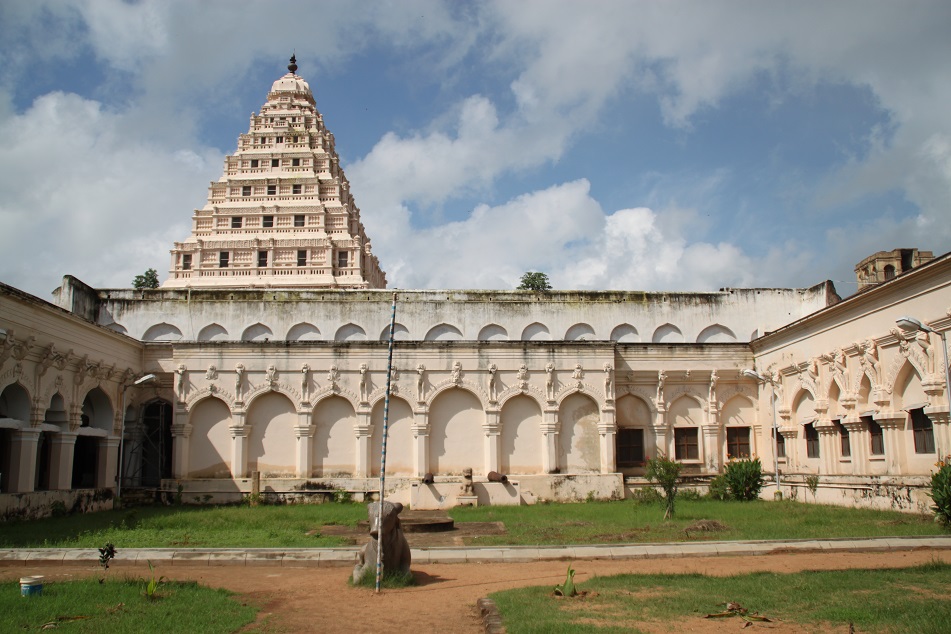
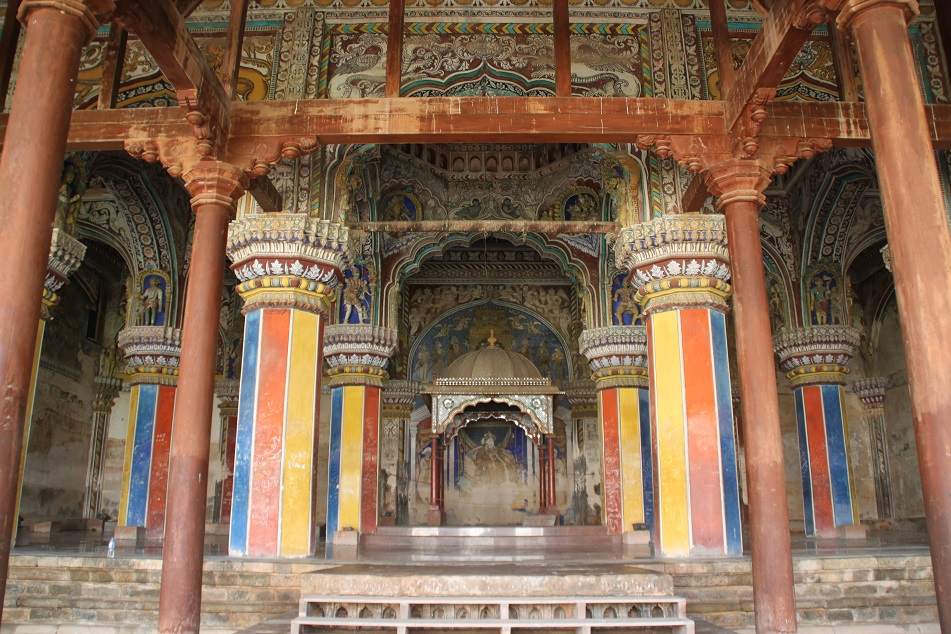
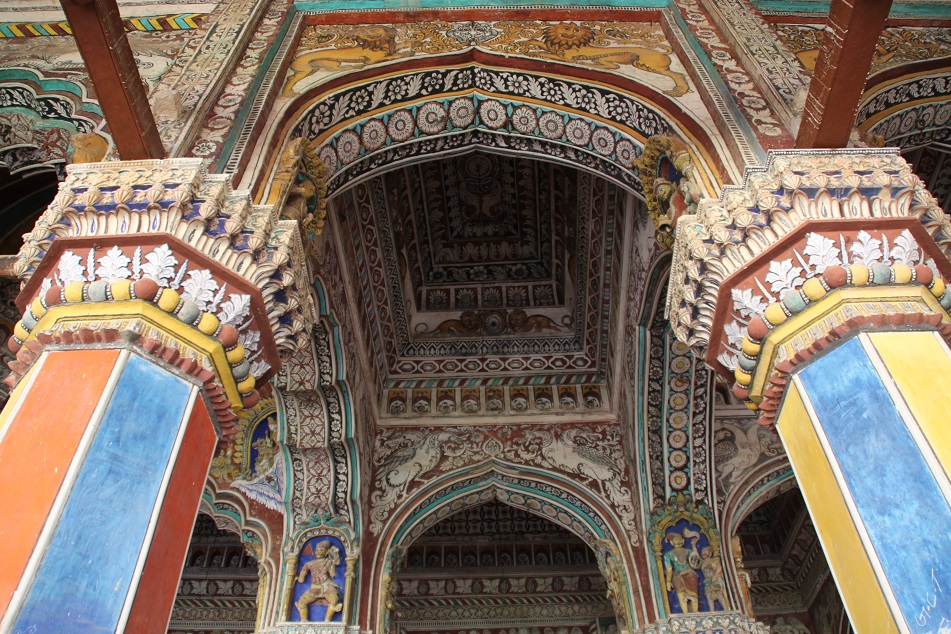
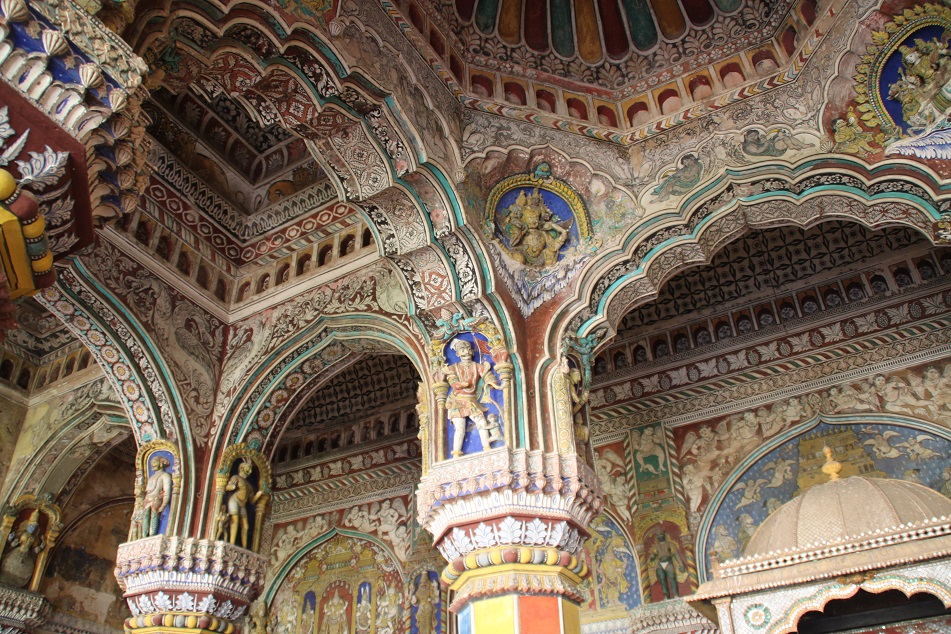
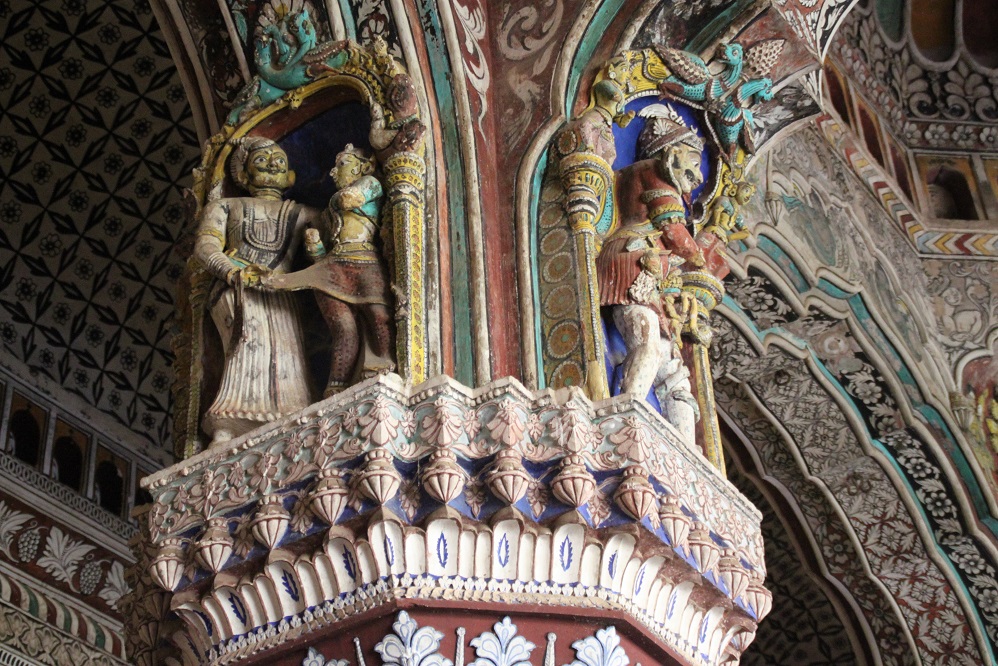
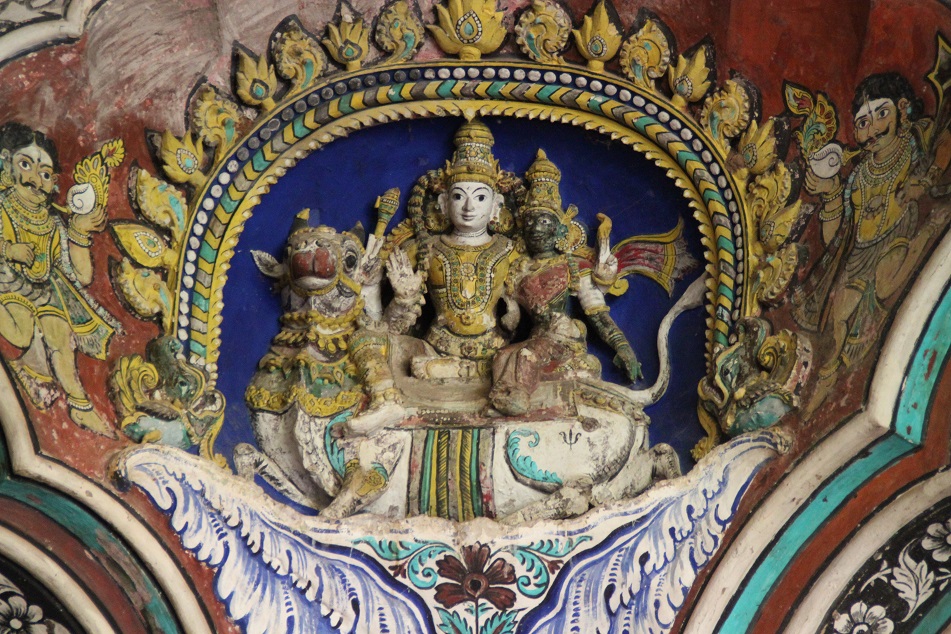

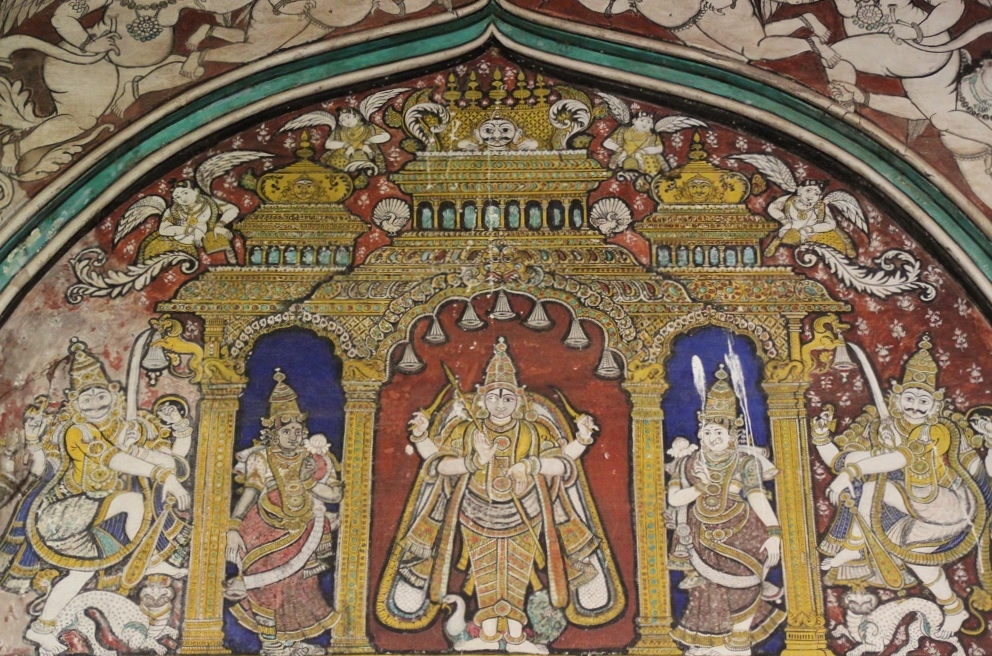
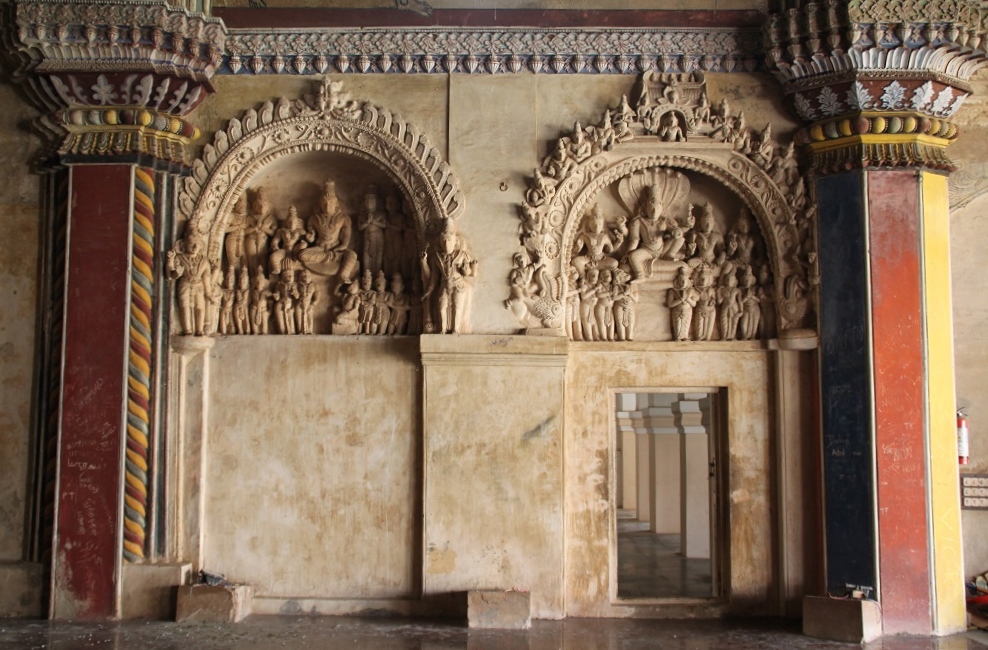
Great post, really interesting!
LikeLike
Thanks Emily! I’m glad you enjoyed this post.
LikeLike
This was truly an eye opener for me regarding the history of colonialism in India. Thank so much for this enlightening contribution!
LikeLike
You’re very welcome, Peter. It’s always fascinating to learn about less-known events in history, which will enrich our understanding on why and how we got to the point where we are today, and what we should do to prevent bad things from reoccurring in the future.
LikeLiked by 1 person
Reblogged this on ENLIGHTENMENT ANGELS and commented:
Angelic Architectural Beauty!
LikeLike
Beautiful photos and story, thankyou x barbara
LikeLike
Thank you for reading and leaving such kind words, Barbara.
LikeLiked by 1 person
Incredible photography! Nice work
LikeLike
Much appreciated, Jess!
LikeLike
Of course I’ve never heard of this place. It is quite magnificent!
Alison
LikeLike
I didn’t know about this place either until I stumbled upon a blog post written by one of the Indian bloggers that I’ve been following. Thanks for reading, Alison.
LikeLiked by 1 person
noce phot bro..autentic banget
LikeLike
Wah, thank you banget! Untung aja sebelum berangkat ke India sempet nemu artikel mengenai tempat ini, jadi diagendakan untuk dieksplor.
LikeLike
iya mas bama, salah satu penggemar foto2 mu nih 🙂
LikeLike
Matur nuwun. 🙂
LikeLike
The colors of the pillars are astounding Bama. Such detail throughout. You take your readers to such fascinating spots Bama. I’m always happy to be along for the tour.
LikeLike
The pleasure is mine, Sue. I can imagine how lively the Durbar Hall must have looked during its heyday.
LikeLiked by 1 person
Great post, the pictures are beautiful!
LikeLike
Thanks Katie! There’s something beautiful and enchanting about places which are half-abandoned like this palace’s Durbar Hall.
LikeLiked by 1 person
It certainly was lovely.
LikeLike
amazing shots Bama great attention to detail!
LikeLike
Much appreciated, Liz. I’m always drawn to places with a plethora of detailed carvings and ornate decorations. It’s mind-boggling to think of the amount of time spent to create such exquisite works of art.
LikeLiked by 1 person
Wow! Fading opulence is exactly right.
LikeLike
Only time can tell how this once exquisite hall would look like decades from now.
LikeLiked by 1 person
Very beautiful. I like all the decorations on the walls very much.
LikeLike
Thanks for dropping by! The hall is quite fascinating, isn’t it? India really is a place where no wall is left unadorned.
LikeLiked by 1 person
I sadly never visited India. But one day I will…
LikeLiked by 2 people
And I hope that day comes sooner than later.
LikeLiked by 3 people
Thank you. Yes, I hope I’ll be able to travel more one day.
LikeLiked by 2 people
Reblogged this on My Awesome Pics!!!! and commented:
awesome pics check it out
LikeLike
Thanks for the reblog!
LikeLike
your welcome –your pictures are awesome i had to share them
LikeLike
I am always excited to read pieces on places I have never been before. I really enjoyed post and your gorgeous pictures and can’t wait to read more! Greetings from Germany 🙂
LikeLike
And that’s exactly what makes blogging so much fun! We are constantly inspired and fascinated by places so foreign to us. Vielen dank for reading and leaving such a kind comment, Anna!
LikeLiked by 1 person
The manner in which you have captured India is simply magnificent … However, you have not covered North India at all. Do visit places like Ranikhet, Almora, Himachal, Kausani, Delhi etc. Do not miss them …
I am absolutely enamored by your blog … It is one of the most beautiful blogs I have seen. Please keep writing … Much love Sugarsatchet!!
LikeLiked by 2 people
I really appreciate your kind comment. On my first trip to India in November 2015, I focused on the southern part of the country: Goa, Karnataka, Kerala, Tamil Nadu and Pondicherry, as well as a short stay in Kolkata. However, I know just one visit would never do India justice. For my future trip(s) I have already had several places in mind: Hyderabad, Mumbai, the Ajanta and Ellora Caves, and Diu, to name some. Now I have even more places to add on my wish list thanks to your recommendation.
Thanks again for dropping by and sharing your thought!
LikeLiked by 3 people
Hey … Would love to help you plan your trip and stay in India. There are places which are like hidden gems which need to be written about … Nagaland, Sikkim, Arunachal Pradesh, Assam … Travel websites don’t do justice to these places and they have a lot to offer in terms of beauty, culture, food, tradition, artefacts … Drop in a text when you plan to come down next. I love showing off my country to the world … Keep writing. Lots of love … Sugarsatchet
LikeLiked by 2 people
In addition to the places you mentioned, I’m also eyeing on Meghalaya and Unakoti in Tripura. The Northeastern states look so appealing, indeed. Thanks again for your suggestion, Sugarsatchet. Hopefully my second trip to India comes sooner than later.
LikeLiked by 3 people
All the best Bama … Please let me know if I can be of any help. Much love
LikeLiked by 3 people
Bama, Durbar Hall was magnificent indeed, but it was sad to see how neglected and dusty it was – it’s as though people simply do not care about this fascinating part of their heritage. I particularly remember the pervasive smell of bird droppings and urine while we were there (also being gifted with a wet, unwanted “souvenir” by an errant pigeon). Hopefully someone will step in these next few years to clear out the birds and restore the place to its former glory.
LikeLiked by 2 people
I was surprised to find the hall in a rather neglected state. I wonder if the lack of funding is the main issue, since the same pattern keeps repeating in Indonesia as well. Or maybe it’s the bureaucracy. I do hope this hall will see better days sooner than later, so people can appreciate the rich heritage of this part of India.
LikeLiked by 3 people
Love the research you put into the history of the place you visit.
Cheers,
Ausmita | http://www.wanderfulweekendz.com
LikeLike
Thanks again, Ausmita. Doing research is quite time consuming, but it gives us better understanding of a place from historical and cultural perspectives.
LikeLiked by 1 person